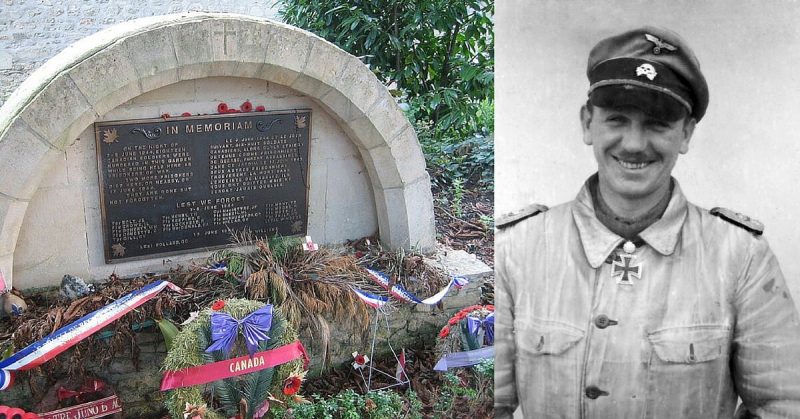In the early days of the Normandy campaign 20 Canadian soldiers, members of the North Nova Scotia Highlanders and 27th Armoured Regiment (part of the Sherbrooke Fusilier Regiment), were captured and executed by Waffen SS forces in a monastery near Caen, France. The incident was a direct violation of the Geneva Convention, which was signed by Germany before the war.
The executioner was the infamous SS Standartenfuhrer, Kurt Meyer. Meyer was in charge of the 25th Panzer Grenadier Regiment and under its wing, the fanatical 12th SS Panzer Division Hitlerjugend. The Hitlerjugend Division was comprised of ex-members of the Hitler Youth, who were sent to Caen to participate in combat against the invading Allies.
Their senior officers were battle-hardened Waffen SS members. Among them was Kurt Meyer, nicknamed Panzermeyer. Before the war, he was trying to establish a career as an apprentice shopkeeper, road builder, and a postman, but was unable to keep a job. He joined the Nazi Party in 1930, three years before Hitler was appointed Chancellor of Germany.
Soon after the beginning of the war, in 1939, Meyer was awarded the Iron Cross and quickly rose through the ranks. He fought on battlefields all over Europe ― he fought in Poland, Netherlands, the Balkans, the Eastern Front and finally France during the Allied invasion. Meyer excelled in battle but also gained a reputation as a war criminal, executing civilians and prisoners alike.
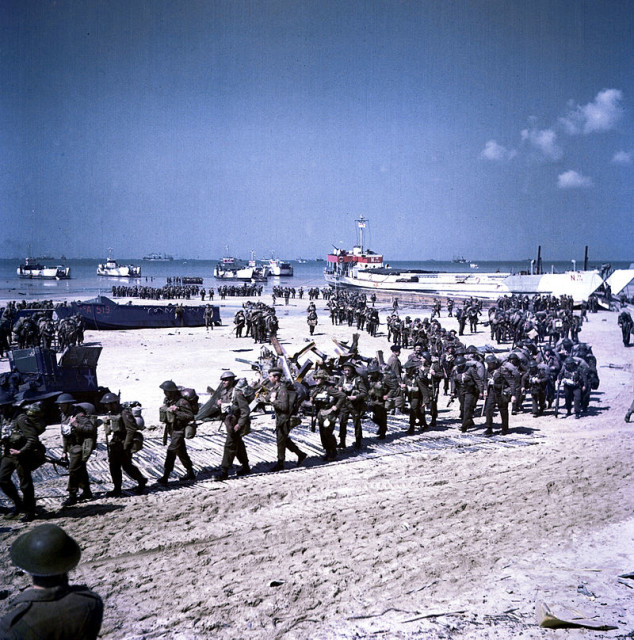
The captured Canadians were all young men, barely out of school, with no combat experience. They were outmanoeuvred and captured in June 1944. The headquarters of the 25th Panzer Grenadier Regiment was located in the Ardenne Abbey, so the soldiers were taken there. The rest of the story is based on evidence gathered during an investigation of the massacre.
Their bodies were discovered on July 8th, 1944, after the Abbey had finally been liberated by the Canadian Army. First, they found the body of Lieutenant Thomas Windsor. Some of the bodies were found by the villagers around the premises. Examinations of the remains revealed that the soldiers had either been shot or bludgeoned directly in the head. After the discovery, their bodies were properly buried.
Further investigations concluded that the soldiers were shot during the evening on June 7th, and on the following day. In addition to the 20 confirmed cases, two more Canadian soldiers are believed to have suffered the same fate on June 17th, also on the premises of the Abbey, but their bodies were never found.
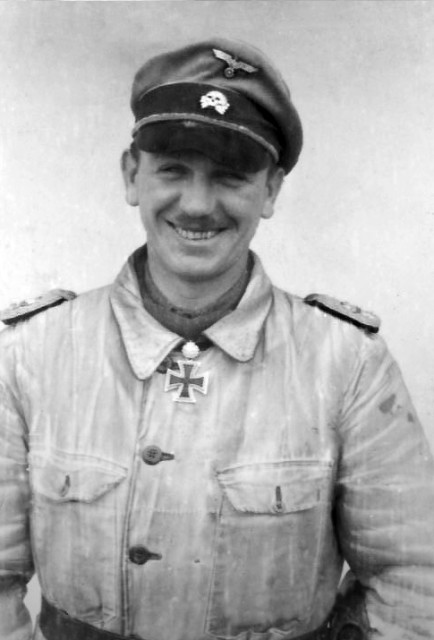
After a year of investigation, in the period between 1944 and 1945, the Canadian War Crimes Commission, led by Lieutenant-Colonel Bruce Macdonald, managed to put together the pieces of who was responsible for the murders.
Kurt Meyer remained the prime suspect. The Ardenne Abbey massacre was only one of several war crimes of which Meyer was accused. In total, five charges were laid against him in relation to the Ardenne Abbey massacre:
- Inciting and advising soldiers under his command to refuse quarter to Allied troops.
- Commanding his troops to kill 23 POWs at or near the villages of Buron and Authie on 7th of June 1944.
- Commanding his troops, on 8th of June 1944, to kill seven prisoners of war at the Abbaye Ardenne, and as a result of such orders, the prisoners were shot and killed.
- (Alternative to the third charge) Responsibility for the killing of seven Canadian POWs at the Abbaye Ardenne on 8th of June 1944.
- Ordering the killing of 11 Canadian POWs at the Abbaye Ardenne on 7th June 1944.
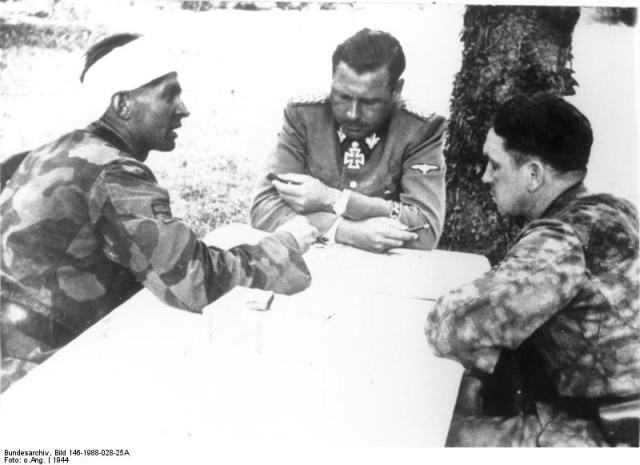
One of the main witnesses to the case was the SS Private Alfred Helzel, who confirmed to the Canadian authorities that he and other soldiers under Meyer’s command were given orders not to take prisoners. However, Helzel withdrew his claim in court but was later convinced to confirm it again. Citizens of the towns of Authie and Buron testified against the 12th SS and to the various atrocities committed against Canadian soldiers.
Various Canadian soldiers also testified, and most important among them was Private Stanley Dudka. He was taken a prisoner and witnessed the German military police pick ten random prisoners who were later taken to an unknown location. Among the ten men was Private Moss, whose body was identified in Ardenne Abbey.
The central witness in the case was Jan Jesionek, a Polish soldier who had been pressed into service by the Wehrmacht. Jesionek confirmed that he overheard Meyer say to his fellow officer: “What should we do with these prisoners; they only eat up our rations?” They settled on the “no prisoners” policy afterwards. Jesionek then saw each prisoner being questioned and led to the garden of the Abbey.
The soldiers were shot in the back of their heads, one by one, as they finished questioning. This was done to six prisoners. Jesionek and three fellow drivers examined the bodies after execution, all lying in the garden and surrounded by blood.
According to Jesionek, the Canadians realized what was happening, each prisoner shaking hands with his comrades before walking to the garden and being shot. Uncertainty over Meyer’s commands remained since Jesionek never heard Meyer give the order to kill the Canadians.
Meyer defended himself, claiming he had no knowledge of the executions. He said that he had seen the bodies in the garden two days after they were shot. By his own testimony, he was disgusted and ordered the bodies to be buried.
He also claimed that he even tried to punish the ones who killed the Canadians, but was unsuccessful in conducting the punishment. These claims were refuted by French teenagers, however, who lived in the Abbey and testified that no bodies were visible in the garden when they went there the day after the murders.
Meyer was found guilty of inciting his troops to commit murder and of being responsible as a commander for the killings that happened in Ardenne Abbey. He was sentenced to death, but his sentence was commuted to life imprisonment. Kurt Meyer was set free on 7th September 1954, after serving nine years in prison in Canada.
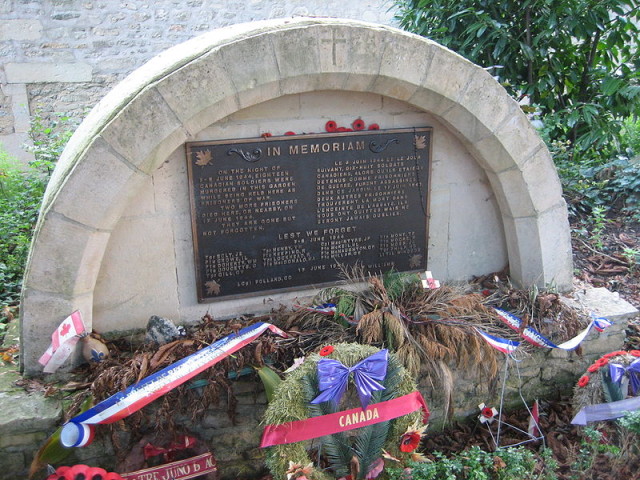
In 1984, a monument was erected for the victims of the Ardenne Abbey massacre. The inscription, followed by the names of those killed, reads:
“IN MEMORIAM. ON THE NIGHT OF 7-8 JUNE 1944, EIGHTEEN CANADIAN SOLDIERS WERE MURDERED IN THIS GARDEN WHILE BEING HELD HERE AS PRISONERS OF WAR. TWO MORE PRISONERS DIED HERE, OR NEARBY, ON 17 JUNE 1944. LEST WE FORGET.”
